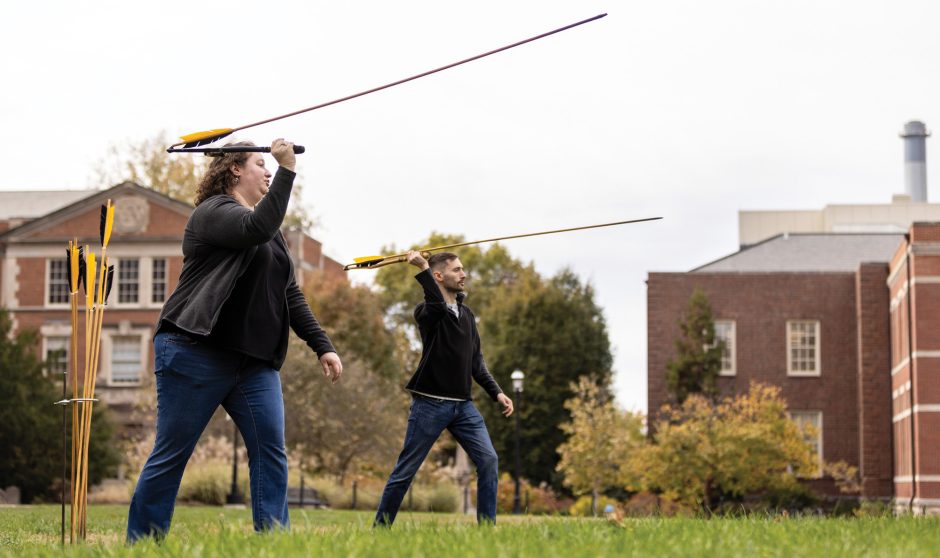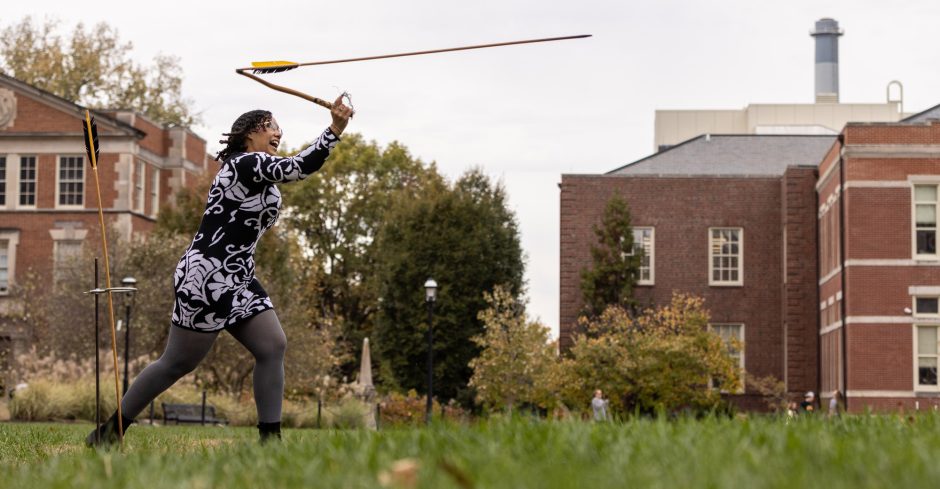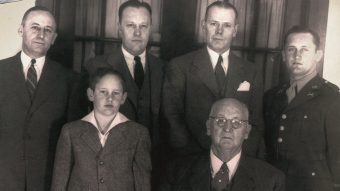
Published on Show Me Mizzou Jan. 10, 2024
Story by Dale Smith, BJ ’88
Mizzou anthropologist Rob Walker is throwing a skeptical light on the long-held view that men were pretty much the only hunters in prehistory. In scientific terms, his new study asks, “Could men and women have thrown spears with roughly equal facility?” Or, to put a cultural point on the question, “Who brought home the mastodon bacon?”
The answer may have begun to shift about 50,000 years ago with the invention of a technology known as the atlatl, a rod with a handhold at one end and a projection at the other to secure a spear in place until release. The atlatl was a major advance, Walker says, as it essentially gave hunters the added leverage of a much longer arm. Suddenly, they could throw smaller spears called darts much faster (65%) and farther than they could heave the larger and heavier javelins that had been around for hundreds of thousands of years.
Anthropologists had speculated for decades that the weight of javelins largely excluded women from hunting. But newer thinkers wondered whether the atlatl’s mechanical advantage and low learning curve may have served as an equalizer. Walker and his colleagues at Kent State University recently became the first to test the idea.
They compared the velocity at which 108 men and women threw darts using atlatls versus javelins using arm power alone. Total throws: 2,160.
Results for javelins decisively favored men, as expected. Males threw at speeds ranging from 8 to 16 meters a second, women at 5 to 12. When it came to atlatls, however, the difference between genders largely vanished. Men launched darts at 10 to 24 meters a second, women 10 to 20. Why the difference? Walker’s Kent State colleague Michelle Bebber observed that men in the study “became frustrated because they were trying too hard and attempting to use their strength to launch the darts.” In contrast, Walker points out, atlatl technique relies more on timing and coordination of finer skills, such as flicking the wrist.

Walker says the relative equality of atlatl scores could suggest that women were more than capable of joining hunting parties. If so, that role goes against entrenched assumptions. “There’s been a double standard in how we interpret the archaeological record,” he says. “We’ve long assumed that any female burials with weapons were for special purposes unrelated to hunting.” However, the new study suggests that Ice Age women probably were highly valued on the hunt — a unification of labor rather than division. Read the study at tinyurl.com/MIZnature.
To read more articles like this, become a Mizzou Alumni Association member and receive MIZZOU magazine in your mailbox. Click here to join.



